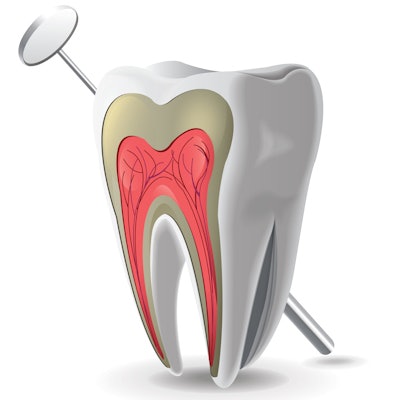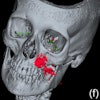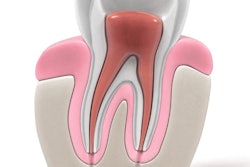
Not all endodontic files are equal when it comes to reducing pain after root canal treatment. A new study found that patients reported less pain after being treated with the Self-Adjusting File from ReDent Nova than other, similar endodontic files.
Researchers tested three different types of similarly sized, nickel-titanium endodontic systems to see whether the tools affected postoperative pain. They found the Self-Adjusting File outperformed the ProTaper Next (Dentsply Sirona) and WaveOne Gold (Dentsply Sirona), and their results were published in Journal of Conservative Dentistry (May 22, 2018).
"There is a lack of clinical evidence comparing the postoperative pain after using different nickel-titanium systems, such as the ProTaper Next, WaveOne Gold, and Self-Adjust File, which employ varied file design and motion kinematics," wrote the authors, led by Suparna Ganguly Saha, MDS, from the department of conservative dentistry and endodontics at the College of Dental Science and Hospital in Indore, India.
The tools used affects post-op pain
Dental professionals strive to reduce patients' pain following root canal treatment. Therefore, the authors were curious whether the filing system used would significantly affect patients' postoperative pain.
To find out, they conducted a study at the College of Dental Science and Hospital Department of Conservative Dentistry and Endodontics in Indore. More than 200 adult patients who needed a root canal treatment participated in the study. The researchers initially thought there would be no difference in postoperative pain.
The patients all had symptomatic irreversible pulpitis without or without apical periodontitis. The study excluded patients with root canals curved beyond 25°, complex root canal morphology, or who needed retreatment.
Postgraduate students performed single-visit endodontic treatment on the patients using the ProTaper Next, WaveOne Gold, or Self-Adjusting File. Patients reported their pain levels using a visual analog scale (VAS), which allows them to indicate their pain level by placing a point on a continuous line. Higher scores indicate higher levels of pain.

None of the participants reported severe pain during the study. However, patients treated with the Self-Adjusting File reported less pain than patients treated with ProTaper Next and the WaveOne Gold.
This pain difference was most stark 48 hours and 72 hours after root canal treatment, with the Self-Adjusting File significantly outperforming both of the other systems. The Self-Adjusting File also significantly outperformed the ProTaper Next at all time periods, and the WaveOne Gold outperformed the ProTaper Next at seven days after the operation.
"[ProTaper Next] has a rectangular cross-section together with a decreasing taper at the coronal section has higher screw-in force and flexural rigidity," the authors wrote. "This may result in apical transportation in straight section in severely curved canals."
Is more research needed?
While the researchers did not receive any outside funding or report any conflicts of interest, the study still had a couple of shortcomings. Notably, the researchers did not measure the number of analgesics taken by the study participants, which may have affected the pain results. Furthermore, pain is subjective and can be difficult to quantify, the authors noted.
However, they still held that the Self-Adjusting File system may be the best tool for reducing pain after root canal treatment.
"Within the limitations of this study, it may be considered that [Self-Adjusting File] system causes minimum post instrumentation pain when compared to [WaveOne Gold] and [ProTaper Next], thus emphasizing the suitable instrument selection for cases with symptomatic irreversible pulpitis," they concluded.



















